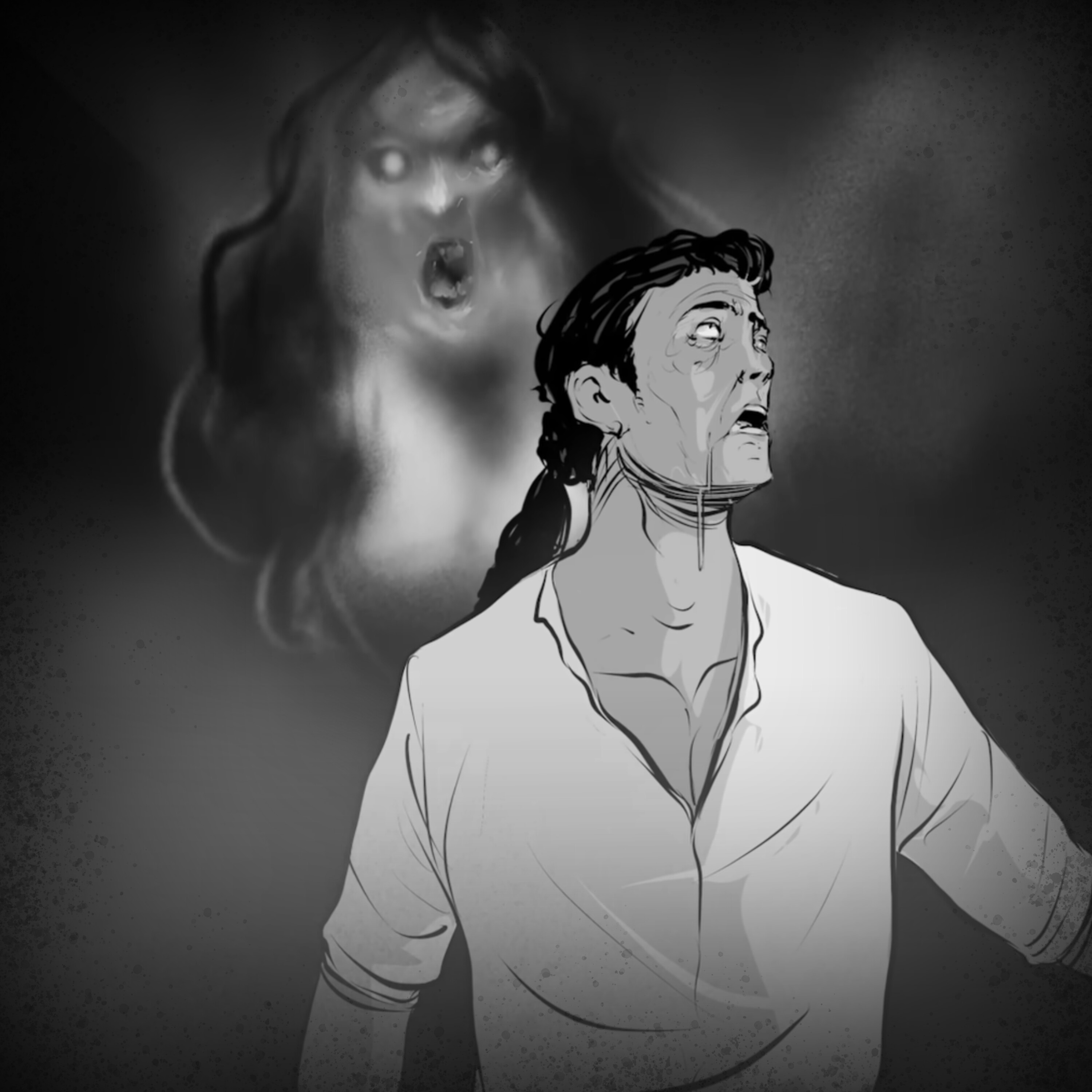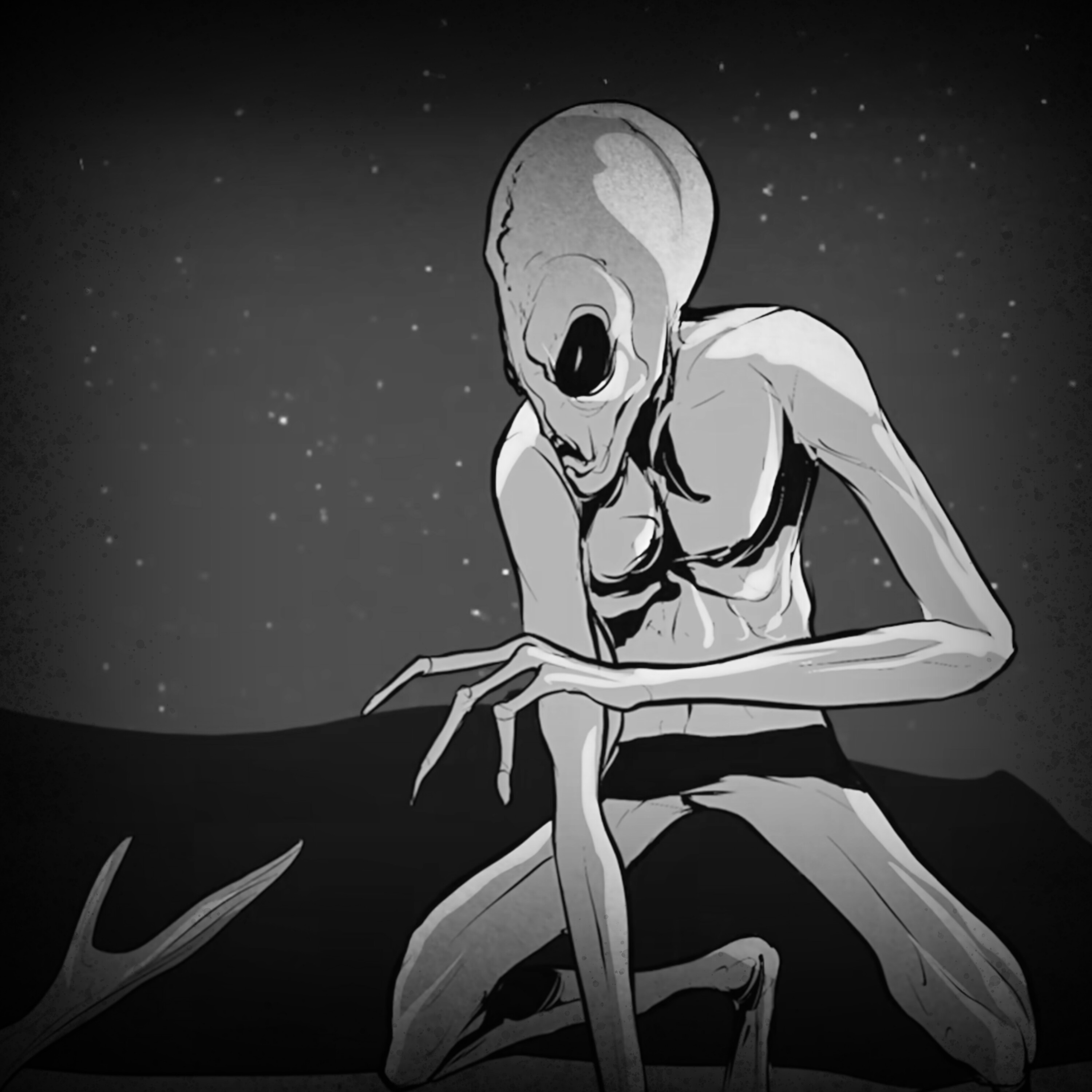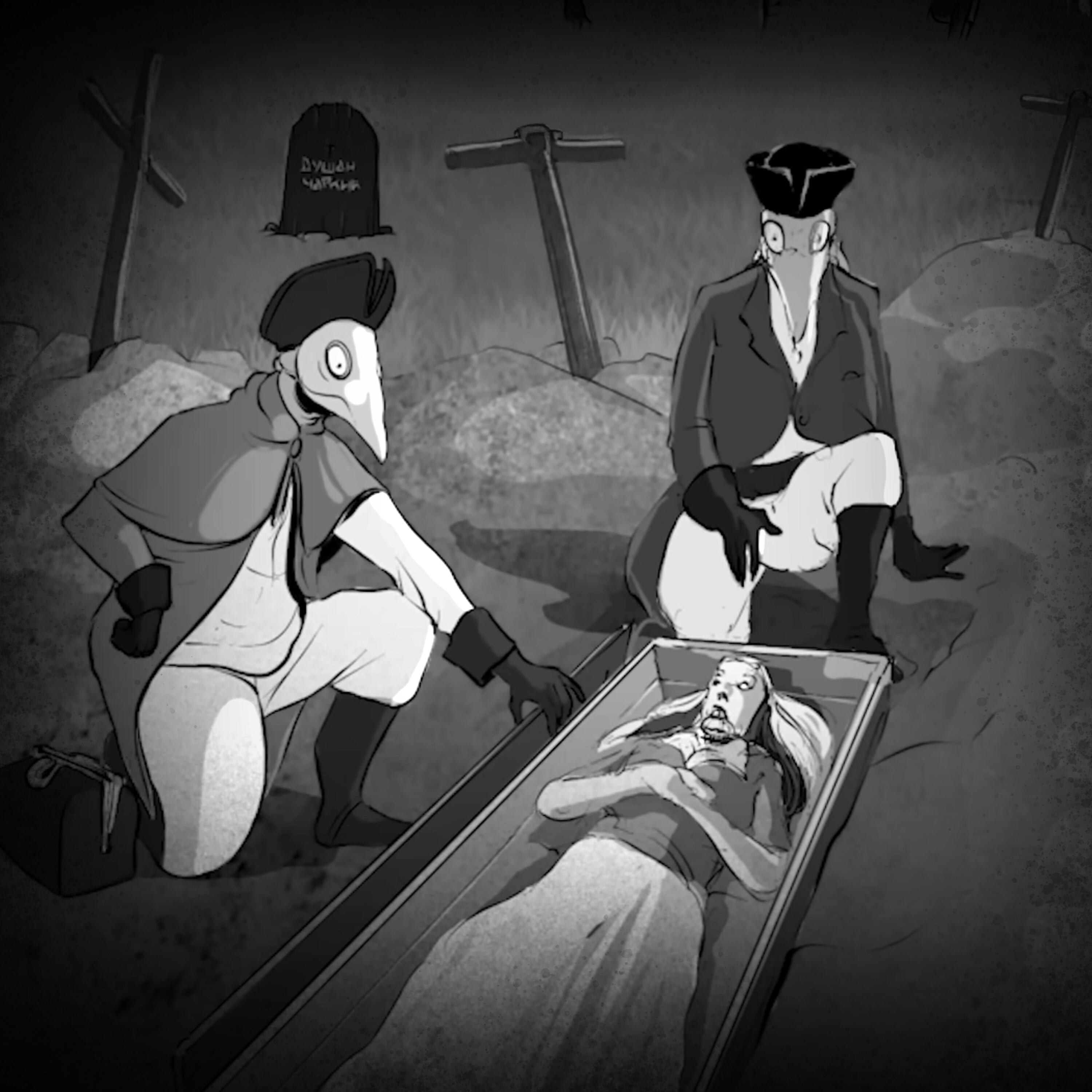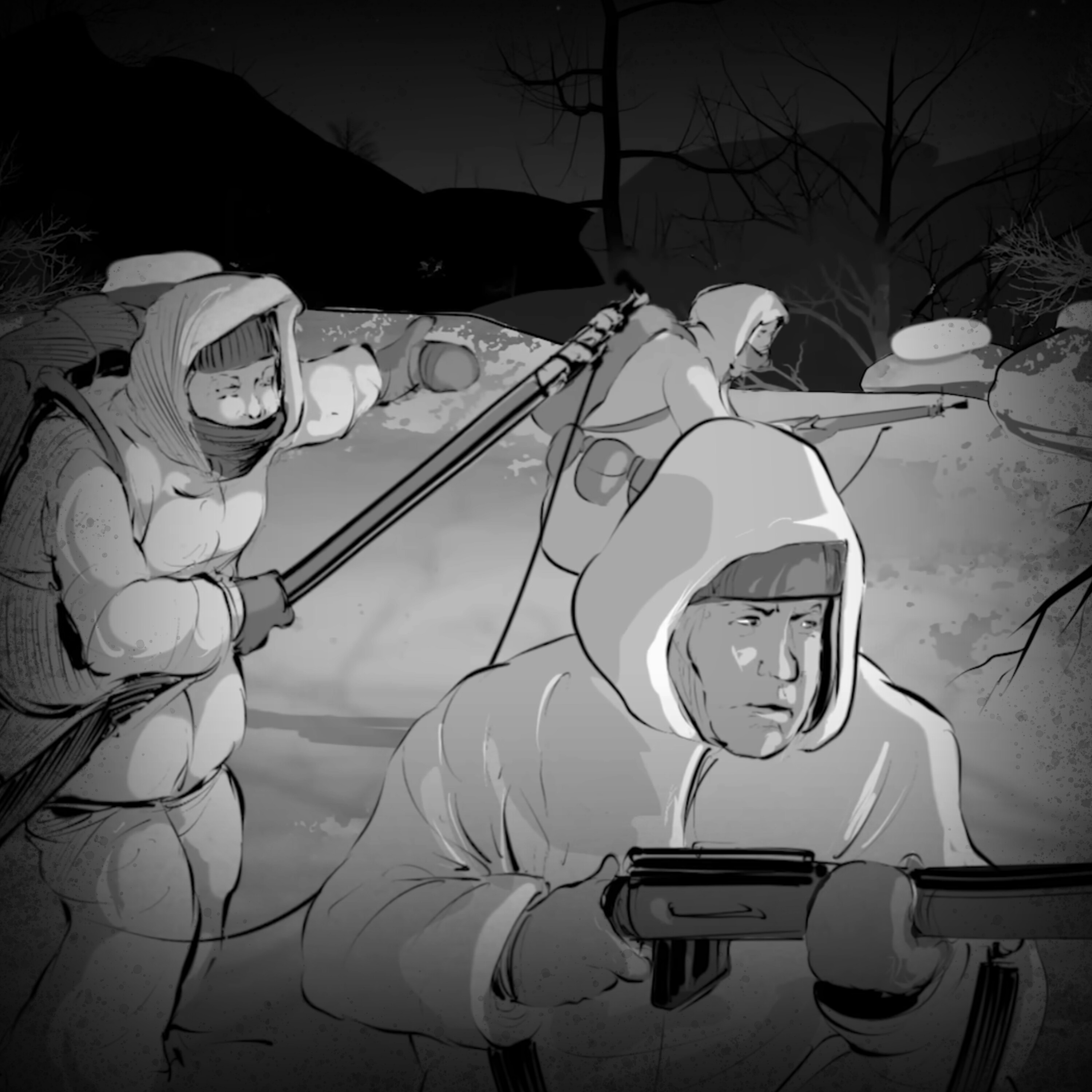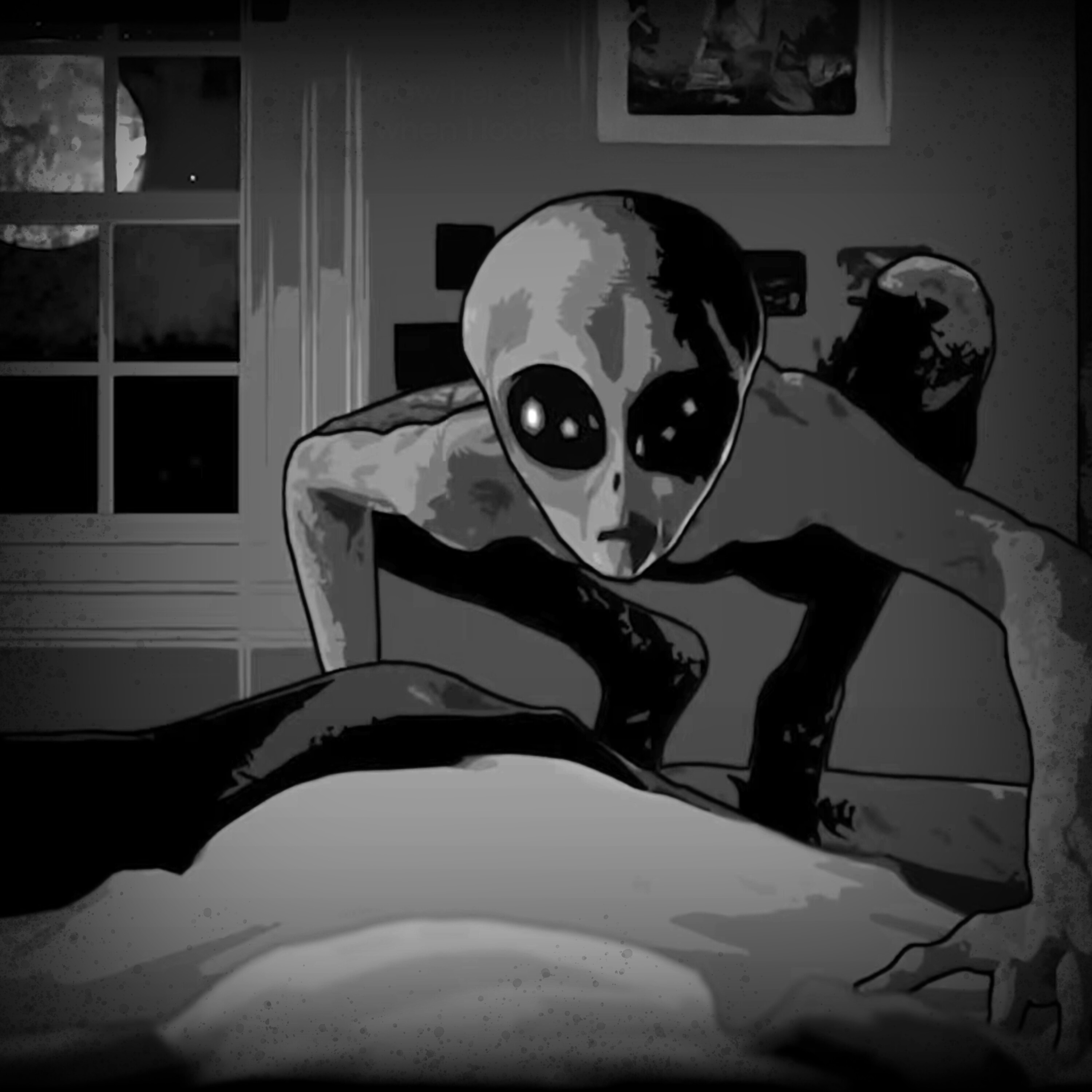Soldiers Scared to Actual Death
What killed these Irish and British men?
See Privacy Policy at https://art19.com/privacy and California Privacy Notice at https://art19.com/privacy#do-not-sell-my-info.
Press play and read along
Transcript
Speaker 1 Wondery Plus subscribers can listen to new episodes of Wartime Stories early and ad-free right now. Join Wondery Plus in the Wondery app or on Apple Podcasts.
Speaker 1 It is commonly believed across a broad array of cultures that spirits can act as messengers from the beyond.
Speaker 1 For many, this is a source of great comfort, the idea that a deceased loved one can transcend the barrier between life and death in order to send one final farewell.
Speaker 1 Within the ever-expanding catalog of paranormal entities, however, one will find tales of a more ominous sort of spiritual messenger.
Speaker 1 In the pages of Irish lore, this being is found to be in the employment of death itself, her pained cries intending to impart a terrifying warning to those who hear it, a message of impending tragedy and certain death.
Speaker 1 And what more of an appropriate time for such a spirit to run rampant than during times
Speaker 1 of war.
Speaker 1 These are stories of wartime and soldier encounters with
Speaker 1 the Banshee.
Speaker 1 I'm Luke Lamana,
Speaker 1 and this is Wartime Stories.
Speaker 1 After riding countless hours through the moonlit Irish countryside, Richard Fanshaw and his wife, Anne, breathed a sigh of relief as their destination finally came into sight.
Speaker 1 The fortified walls of the O'Brien Castle loomed high over the surrounding area, its garrison of soldiers awake and and alert amidst the chaos that had seized the local countryside.
Speaker 1 At this time in the late 1640s, Ireland found itself drawn into the expanding and complex mayhem of the English Civil War.
Speaker 1 The town of Cork had declared its allegiance to anti-crown forces, now occupied by the Irish Catholic troops.
Speaker 1 Two of the town's residents, the Fanshaws, being staunch royalist supporters of the English king, wasted little time in fleeing the inevitable persecution by the Catholic Confederates.
Speaker 1 Hoping to make their way to the coast in order to find safe passage to Spain, the Fanshaws, needing a safe place to rest, decided to spend the night at the castle of Lady Honara O'Brien.
Speaker 1 The noblewoman was a good friend of theirs and sympathetic to the loyalist cause.
Speaker 1 Emotionally and physically exhausted from their journey, the Fanshaws, now feeling secure within the castle walls, promptly retired for the evening.
Speaker 1 However, sleep that night would be difficult for the couple to come by.
Speaker 1 Hello?
Speaker 1 Hello?
Speaker 1 Must be the wind.
Speaker 1 Just as she had begun to drift off to sleep, Lady Fanshaw was stirred by what sounded like a faint whisper coming from just beyond the bedroom window.
Speaker 1 At first she paid it little mind, dismissing the sound as a gentle night breeze pushing its way through a gap in the window.
Speaker 1 The more she listened, however, the more the Lady Fanshaw realized that what she was hearing was a voice. The soft whispers of an unseen woman lurking just outside in the darkness.
Speaker 1 But how could that be? Her room was on the second floor and didn't have a balcony. Perhaps, she thought, it was just the wind.
Speaker 1 Still, the odd sound continued, prompting Lady Fanshaw to get out of bed to investigate.
Speaker 1 Drawing near to the window, she was then confronted by a terrifying and otherworldly sight.
Speaker 1 Seeming to appear from nowhere, out of the looming darkness beyond the glass, was a woman, a ghastly-looking woman.
Speaker 1 She was pale, her fiery red hair standing in stark contrast to her white skin and elegant attire. Her eyes, too, were red, as if she had spent countless hours in tearful mourning.
Speaker 1 Without warning, she screamed, painful, shrieking wails of sorrow that pierced through Lady Fanshaw like a cold knife. Though terrified, she could still make out the words of the spectral woman.
Speaker 1 Over and over again she cried, Ahon, Ahon, Ahon, an ancient Irish lamentation roughly translated as, Alas,
Speaker 1 alas,
Speaker 1 alas.
Speaker 1 After uttering these cries of sorrow, the woman beyond the window finished her wailing with a sigh. her breath now again like a soft breeze as she slowly faded back into the darkness of the night.
Speaker 1 But what on earth, Anne thought, as she relived the encounter over in her mind, was the meaning of all of this.
Speaker 1 She closed the window and returned to bed, considering that she may have simply experienced a night terror, the product of a weary mind plagued by thoughts of the ongoing war.
Speaker 1 Falling into a restless sleep, the next morning would present a terrible answer to her question.
Speaker 1 At daybreak, the Fanshaws awoke to find the entire castle in a frenzy. The O'Brien family was clearly shaken by an unexpected tragedy.
Speaker 1 During the night, Lady Hanara O'Brien's cousin, who had been staying at the castle, had died in his sleep.
Speaker 1 Upon hearing the news, Anne Fanshaw immediately recalled the terrifying, ghastly woman outside her window, her painful cries still echoing through her mind.
Speaker 1 Lady Fanshaw now understood what she had witnessed.
Speaker 1 Though English-born, she had heard tell of such Irish myths from many of her Irish friends, becoming well-versed in the folklorish tales of her new home.
Speaker 1
But this was clearly no myth, nor a mere nightmare. The Banshee had come to Castle O'Brien, and true to form, she had come to collect a soul from among the living.
The soul of Lady O'Brien's cousin.
Speaker 1 The tale of Anne Fanshaw's encounter at O'Brien Castle has become one of the most iconic Banshee sightings in paranormal history. However, it is far from being the only story of its kind.
Speaker 1 While spoken tales of the Banshee long predate the existence of the Irish state, written accounts of this wailing feminine specter can be traced back as early as the turn of the 14th century.
Speaker 1 Over the course of many hundreds of years, tales of the Banshee, her painful cries of sorrow, signaling imminent death, would become well ingrained in the culture of Ireland.
Speaker 1 So universal was the belief in this entity that some of Ireland's most prominent historical figures would tell of their own encounters with this infamous woman of death.
Speaker 1 This next story, as witnessed by Sir Jonah Burrington, a man held in high regard by historians as as an Irish lawyer, judge, and politician, speaks to the enduring presence of the Banshee in Irish lore.
Speaker 2 Oh, go on, you get another one about him.
Speaker 3 It was a murder case in Dublin, and the woman that killed her husband captured the whole nation. It was the first woman who was ever going to be hanged.
Speaker 3 There came the day that the court was packed outside, thousands of people and what have you. The judge put the black cap on, which meant you were going to be hanged by the neck.
Speaker 1 And then he took it off again.
Speaker 3 And he looked at her and he said, I'm going to be lenient with you, shame as how you're a widow.
Speaker 3 Oh, Baron.
Speaker 1 In August 1801, Sir Jonah Burrington, alongside his wife, found himself mingling amongst other Irish elites at the home of his friend, 1st Baron Rossmore, having been invited to spend the night following a rather enjoyable party they had attended at Dublin Castle.
Speaker 1 The elderly Rossmore was a lifelong soldier, having first seen action in the Scottish Jacobite uprising of 1745, and distinguished himself in many campaigns since, attaining the rank of general.
Speaker 1 His storied military career had only recently come to an end when he retired from his final post as as Ireland's Commander-in-Chief, having served from 1793 to 1796.
Speaker 1 So highly commended was his service to the King that in 1796, his true name being Robert Cunningham, he was elevated to the peerage of Ireland by King George III, being christened Baron Rossmore of Munaghan in the County of Munaghan.
Speaker 1 Now five years on, the Baron's demeanor on that summer night was described by his friends as jolly and upbeat, the old soldier displaying no signs of ill health or fatigue as he retired for the evening.
Speaker 1 Having similarly returned to their quarters in the early hours of the morning, the Barringtons would find their sleep interrupted by a peculiar and unnerving sound.
Speaker 1 Sir Jonah Burrington would recall the spine-chilling ordeal in his own words.
Speaker 1
I listened. It occurred first at short intervals.
It resembled neither a voice nor an instrument. It was softer than any voice and wilder than any music and seemed to float in the air.
Speaker 1 I don't know wherefore it bought me artifice forcibly.
Speaker 1 The sound became still more plaintive and till it almost died away in the air.
Speaker 1 When a sudden change, as if excited by a pang, changed its tone.
Speaker 1 It seemed descending.
Speaker 1 I felt every nerve tremble. It was not a natural sound, nor could I make out the point whence it came.
Speaker 1 Barrington's wife would also recount hearing this unsettling noise, an eerie mixture of low groans and sobs that they assumed was coming from the gardens beneath their high bedroom window.
Speaker 1 After several minutes of listening, the situation would escalate to a terrifying new extreme.
Speaker 1 With little warning, the pitiful moans would explode into a series of shrieking screams, piercing the stone walls of the old Rossmore estate.
Speaker 1 Through the blood-curdling screams and painful sobs, Burrington, petrified alongside his wife, could hear a single, distinct name being called by the phantom voice.
Speaker 1 Rossmore,
Speaker 1 Rossmore,
Speaker 1 Rossmore.
Speaker 1 With a soft, final sigh, the voice then seemed to fade away into the early morning darkness, leaving the terrified couple in a state of complete shock.
Speaker 1 As an Irishman, Sir Jonah Burrington was all too familiar with the mythology and folklore of his native homeland. He knew the screams were the calling card of an unnatural being.
Speaker 1 Possibly for the sake of his terrified wife, Burrington played down the whole situation. Surely, they were just too tired and had a bit too much to drink at the night's festivities.
Speaker 1 Or perhaps an intoxicated neighbor or relative had simply stumbled her way into the Baron's elaborate gardens to wail away her own sorrows into the night.
Speaker 1 However, as the sun rose, the reality of the situation proved to be hauntingly grim.
Speaker 1 Despite being in good health and in good spirits mere hours before, Robert Cunningham, the first Baron Rossmore,
Speaker 1 was now dead.
Speaker 1 More haunting still, having heard the strange lamenting wails in the early hours, one of the servants explained that she had come into his room around half past two to investigate the noise, only to find the Baron writhing in bed, clearly in the agonizing throes of death.
Speaker 1 Like Lady Fanshaw over a century and a half prior, Sir Jonah Burrington, unable to discount those terrible screams, calling to his friend in the night, knew that the Banshee had come to call.
Speaker 1
Hey, it's Luke, the host of Wartime Stories. As many of you know, Mr.
Balin and Balin Studios have been a huge help in bringing this podcast to life.
Speaker 1
And if you'd like to believe you are something of a storytelling connoisseur, then you need to check out Mr. Balin's podcast, Strange, Dark, and Mysterious.
Each week, Mr.
Speaker 1 Balin weaves gripping tales of the strange, dark, and mysterious, diving into true crime, unsolved mysteries, and paranormal events that keep you on the edge of your seat. Mr.
Speaker 1 Balin's podcast, Strange, Dark, and Mysterious, is available on all podcast platforms, and it is free, just like ours.
Speaker 1
There are hundreds of episodes available to binge right now with new episodes twice a week. Go listen to the Mr.
Balin podcast today.
Speaker 1 Sir Jonah Burrington's account of the Banshee that signaled the demise of 1st Baron Rossmore, while chilling, is a strange anomaly in the grander lore of the foreboding Irish spirit.
Speaker 1 Those familiar with Celtic and Gaelic mythology would know that Banshees, unlike other quote-unquote normal ghosts, aren't likely to be found weeping for the souls of just anyone.
Speaker 1 These mournful spirits, it seems, prefer to adhere themselves to a select few families prominent within the pages of Irish history.
Speaker 1 The infamous Lucky Five include the Cavanagh, O'Grady, O'Neill, O'Connor, and O'Brien clans. These surnames have since become the most common throughout Ireland.
Speaker 1 The significance of these families can be found in ancient Irish mythology, in which their original family members are cited as being the pure-blooded descendants of the Milesian peoples, who conquered Ireland thousands of years ago, purportedly ousting the three pagan gods that ruled it.
Speaker 1 If the Banshee's unusual conduct finds itself exclusively lamenting the imminent death of one of these select five families, then what business would the spirit have in mourning the loss of Robert Cunningham, the first Baron Rossmore?
Speaker 1 We can only guess.
Speaker 1 But around this same time, with waves of Irish immigrants making their way to the so-called New World in the 18th and 19th centuries, tales of the Banshee would soon start sprouting up in lands far from Irish soil.
Speaker 1 One such account comes to us from the days of the American Revolution in what was was then the fledgling colony of North Carolina.
Speaker 2 All right, lad.
Speaker 2 This will be the last one. All right.
Speaker 2
Damn. Having some trouble there, Mr.
Warner.
Speaker 2 Oh, well.
Speaker 2 When your bones are old and weathered like mine, you won't be laughing, boy. Now,
Speaker 2 you know where you're going? I
Speaker 2 to General Green and the Cottonettle camp down yonder.
Speaker 2 Good lad.
Speaker 2 Now get on your way before the sun goes down.
Speaker 2 Easy, boy.
Speaker 1 Six pounders.
Speaker 2 Lots of them.
Speaker 2
Just to get going. But what about you, Mr.
Warner?
Speaker 2 If the Redcoats find out about your aid to the Cottonettles. Ear you mind that.
Speaker 1 Stay with the general till things
Speaker 1 Yes, sir.
Speaker 1 Along the banks of the Tar River, we find David Warner, a rough man with a well-known hatred of the British, tending to his grain mill, preparing yet another shipment of goods for the nearby Continental Army encampment.
Speaker 1 Despite his young assistant's pleas to flee in the wake of approaching British forces, Warner, a proud patriot, refused to abandon his mill to the king's soldiers.
Speaker 1 An Irishman, known to keep a hot temper and a fighting spirit, rarely one to shy away from speaking his mind, it was this sort of inhospitable attitude towards the British that would set in motion a grisly crime.
Speaker 1 Sometime later, the British troops would indeed arrive at the mill, a small patrol of five knocking on Warner's door in search of provisions.
Speaker 1 As armies of the time largely lived off the land as they trekked through the region, an intact grain mill would certainly be a vital asset to British forces in the area.
Speaker 1 Despite the British troops initially presenting a civil disposition, their mood gradually changed as Warner deliberately ignored their requests, pretending as if they weren't even there.
Speaker 1 Calling out to a worker inside the mill, he's reported to have said, Try to save every ounce of it, my lad, and we'll deliver it to General Greene.
Speaker 1 I'd hate to think of those British hogs eating a single mouthful of gruel made from America's corn.
Speaker 1 Upon hearing this, any appearance of civility the soldiers were willing to maintain immediately vanished.
Speaker 1 They restrained Warner, now marked as an enemy sympathizer, and subjected him to a brutal beating with their fists, boots, and rifle butts.
Speaker 1 Finally, they dragged the battered patriot to the edge of the flowing Tar River and began to deliberate on the traitor's fate.
Speaker 2 Well,
Speaker 2 that wasn't terribly smart, was it then?
Speaker 2 Wouldn't expect much more from a rebel.
Speaker 2 You have passion? I'll give you that.
Speaker 2 Tell me, if you, a patriot, happened across a traitor to the cause, what fate should they meet? Tar and feather?
Speaker 2 Hanging?
Speaker 2 Maybe a swim in the river, perhaps. All right, he's had enough, yeah.
Speaker 2
What? You don't know when to leave well enough alone. You said it yourself.
All those who stand against His Majesty deserve to die a traitor's death.
Speaker 2 Something funny now.
Speaker 1 You can do what you want, lobster. Drown me if you'd like.
Speaker 1 One way or the other, this war will be the death of me. But rest assured, if and you do kill me, the Banshee will get you.
Speaker 1 She'll scream and scream and
Speaker 1 bring you to the depths of hell, I swear to you.
Speaker 2 What was he on? Just more.
Speaker 2 paddywhack, superstitious rubbish.
Speaker 2 Why don't you tell your banshee we'll be sending the rest of your rebel friends your way very soon?
Speaker 2 Stand him up.
Speaker 2 I hope you're a strong swimmer, Mr. Warner.
Speaker 1 Standing Warner to his feet, having tied both his hands behind his back and tying several heavy rocks around his feet and neck, one of the soldiers, a man bearing unnaturally evil eyes and a cruel mouth, egged them on, at which they shoved him off the embankment.
Speaker 1 But as soon as Warner's body plunged into the flowing waters of the Tar River, a shrill, mournful scream echoed across the river, causing the three men to then flee back to the mill.
Speaker 1 That night, however, would bring about an even more terrifying ordeal for these murderous men.
Speaker 1 What the bloody hell is that?
Speaker 1 They would
Speaker 1 The British soldier's commander and accompanying officers had arrived at the mill, making camp and bedding down for the night.
Speaker 1 As the full moon hung in the sky and the raincrow announced a coming shower, a thick layer of fog began to creep its way across the river towards the encampment, the majority of its men now fast asleep in their tents.
Speaker 1 It was then that a terrifying sound shattered the peaceful Carolina night.
Speaker 1 A woman shrieked and wailed into the darkness, her tormented cries waking some of the officers and spurring the sentries on duty to investigate.
Speaker 1 Her sad, passionate lamentations drew the soldiers' attention to the river's edge, where they then witnessed an incredible sight. Materializing out of the river's looming fog was a woman.
Speaker 1 Her eyes, red from crying, were shrouded by a traditional veil, further aided by a head of beautiful flowing hair.
Speaker 1 The officers, transfixed by the haunting sight, watched the spectral woman as she wept and sang eerie songs of pain and loss.
Speaker 1 After several moments, the woman was once again overtaken by the fog, seeming to vanish into thin air as her screams echoed from somewhere further down the river.
Speaker 1 The British officers, terrified and dumbfounded, found themselves at a complete loss of words for what had just occurred.
Speaker 1 The terrifying supernatural experience brought about a feeling of supreme repentance in the three British men who had thrown poor David Warner to his death into the river earlier that day.
Speaker 1 The three of them immediately confessed their crime to their commanding officer.
Speaker 1 Infuriated at the account of their heinous crime, their lack of human decency, and no less their actions unbefitting a soldier in the British Army, he handed them them all a brutal punishment.
Speaker 1 These three men would spend the remainder of the war, if not the remainder of their lives, whichever came first, replacing the now-dead Mr. Warner and fulfilling his duties at the mill.
Speaker 1 As the story goes, this sentencing sealed their fate.
Speaker 1 Every day, they were made to work within the sweltering confines of the mill, churning out sacks full of grain for their comrades on the front lines.
Speaker 1 And every night, they were tormented by the Banshee's cry. Then one night, she appeared in the doorway of the mill, beckoning two of the men to follow her into the looming fog.
Speaker 1 Transfixed by her otherworldly beauty, they obeyed, following her into the darkness, then down to the river, where they threw themselves in, never to be heard from again.
Speaker 1 The final soldier in the trio, the man with evil eyes, would eventually go mad, unable to block out the Banshee's incessant screams.
Speaker 1 Racked with terror and guilt, he would aimlessly wander the woods around the mill in the night, calling Warner's name, begging forgiveness for his terrible crime.
Speaker 1 It was only the Banshee that answered him. One day, his body was found floating in the Tar River, in the exact spot where David Warner had been drowned.
Speaker 1 To this day, it is said that the Banshee still haunts that lonesome stretch of river where the mill once stood.
Speaker 1 On August nights, when the moon is new and the raincrow calls for rain, the banshee will rise out of the mist and scream into the night, forever lamenting the tragic, senseless killing of David Warner.
Speaker 1 Although not at all the only one, as with the previous tale of the British men being tormented by this lamenting spirit, there is another tale of the Banshee in America, recorded in the Encyclopedia of Ghosts and Spirits by Rosemary Ellen Guiley.
Speaker 1 This story comes from Mar Town, West Virginia, a town with many Scottish immigrants who arrived in the early 19th century.
Speaker 1 According to the lore, a Banshee, a shrouded figure who rode atop a white horse, first appeared to the founder of the town, Thomas Marr, who arrived in 1836 along with his West Virginian wife, Mary.
Speaker 1 The Banshee had come to announce Thomas Marr's death. The Marrs ran a farm, and like many people, they'd fallen on hard times during the American Civil War.
Speaker 1 After the war, Thomas got a job as a night watchman on a bridge near Mar Town. On several occasions, Marr told his wife he had spotted a shrouded rider as he traveled to and from work.
Speaker 1 He could not make out the gender, though he thought it was a woman. The mysterious figure and horse always vanished as he approached them.
Speaker 1
Then, on February 5th, 1876, he went to work one night and never returned. While Mary waited for him, the shrouded figure rode up to the farmhouse.
Her telltale wailing announced that Thomas was dead.
Speaker 1 The manner of his death is not known.
Speaker 1 When Mary later died at the age of 90, it is said that the shrieks of a woman were heard near her house, where her corpse was laid out, and the sounds of rattling chains came from the attic.
Speaker 1 So where exactly did the Banshee come to be so prevalent in Irish culture?
Speaker 1 With written reports of Banshee sightings stretching as far back as the early 1300s, it's difficult to determine where such tales first took root in Gaelic and Celtic history.
Speaker 1 For many historians and cultural experts, the spectral banshee can trace its origins to a unique Irish and Scottish funeral custom known as keening.
Speaker 1 Practiced as far back as the 8th century, keening refers to a traditional form of vocal lament for the dead, a ritualistic art performed at the wake or graveside in mourning of someone who's recently passed.
Speaker 1 While primarily being a raw expression of sadness for a loved one's departure, the ancient Celts and Gaels believed that such displays played a role in freeing a person's eternal soul from their physical body, helping them to transition to what they dubbed the other world.
Speaker 1 Though rarely practiced in the modern era, those who have heard the emotional lamentations of traditional Keeners speak of its eerie, unearthly sound, an unnerving mixture of song and intense emotion brought on by grief.
Speaker 1 The Keeners themselves were typically elderly women within the community, their deep connection to spirituality and the supernatural serving to guide those affected by the loss through the turbulent grieving process.
Speaker 1 However, if one such community didn't have such a figurehead, they could simply go about hiring a keener as a sort of independent contractor.
Speaker 1 In fact, it seems that this professional mourner occupation was quite common, with competing keeners sometimes coming to blows over who could attend the services of the highest-paying client.
Speaker 1 If the client in question was of poorer standing, The payment for the keener's services often came in the form of alcohol, such as whiskey.
Speaker 1 As the Catholic Church gained influence in Ireland, the concept of hiring professional mourners came under great scrutiny.
Speaker 1 In the eyes of the Church, the idea of paying someone to weep and pray at the funeral of a complete stranger was inauthentic and thus disrespectful to the solemnity of death.
Speaker 1 With many Keeners themselves now driven by the promise of alcohol or money, many Irish began to turn on the practice, seeing the newer generation of Keeners as perverting the image of once noble and beloved spiritual leaders.
Speaker 1 Perhaps it was this radical change in public opinion that eventually brought about this mysterious legend.
Speaker 1 Or perhaps it was the unscrupulous actions of the Keeners themselves that brought about an unnaturally, indeed hellish, punishment for their greed and bickering at the graveside.
Speaker 1 Once revered in life for their graveside service to the dead, their own spirits were now cursed to lament from beyond the grave, their cries serving as an ominous warning to those who would soon join them.
Speaker 1 And so, the legend of the Banshee was born. Across Scottish and Irish culture, the Banshee is known to present itself in many unique forms, though she's a spirit more often heard than seen.
Speaker 1 The most common physical manifestation, it seems, is that of a haggard old woman.
Speaker 1 If seen, she is reported to be dressed in tattered clothing, her weathered face masked by a funerary veil or by locks of knotted gray hair.
Speaker 1 Often found near the vicinity of water, the Banshee is most commonly depicted as performing one of two actions, combing her long, unkempt hair in between periods of pain sobbing, or, as is reported in periods of war and conflict, washing the blood-stained uniforms of men soon to perish in battle.
Speaker 1 In some renditions, however, the Banshee presents itself as a beautiful young woman with fiery red or pure white hair, her lamentations carrying a soft, ethereal tone.
Speaker 1 In more extreme cases, however, the Banshee appears as the wandering apparition of a headless, naked woman, cradling a bowl filled with blood in her arms.
Speaker 1 Of course, the true terror of the Banshee rests not in her appearance, but in her signature wailing.
Speaker 1 It is said that in times of war, the Banshee's cries were so feared that soldiers, upon hearing her telltale screams, would immediately abandon their posts, often running right into the swords and arrows of their enemy.
Speaker 1 Indeed, once the cry of the Banshee was heard, there was no escape. For what mortal man can hope to outrun
Speaker 1 death?
Speaker 1
Wartime Stories is created and hosted by me, Luke Lamana. Executive produced by Mr.
Bollin, Nick Witters, and Zach Levitt. Written by Jake Howard and myself.
Speaker 1
Audio editing and sound design by me, Cole Lacascio, and Whit Lacascio. Additional editing by Davin Intag and Jordan Stiddam.
Research by me, Jake Howard, Evan Beamer, and Camille Callahan.
Speaker 1
Mixed and mastered by Brendan Kane. Production supervision by Jeremy Bone.
Production coordination by Avery Siegel. Additional production support by Brooklyn Gooden.
Speaker 1 Artwork by Jessica Cloxen Kiner, Robin Vane, and Picada. If you'd like to get in touch or share your own story, you can email me at info at wartimestories.com.
Speaker 1 Thank you so much for listening to Wartime Stories.
